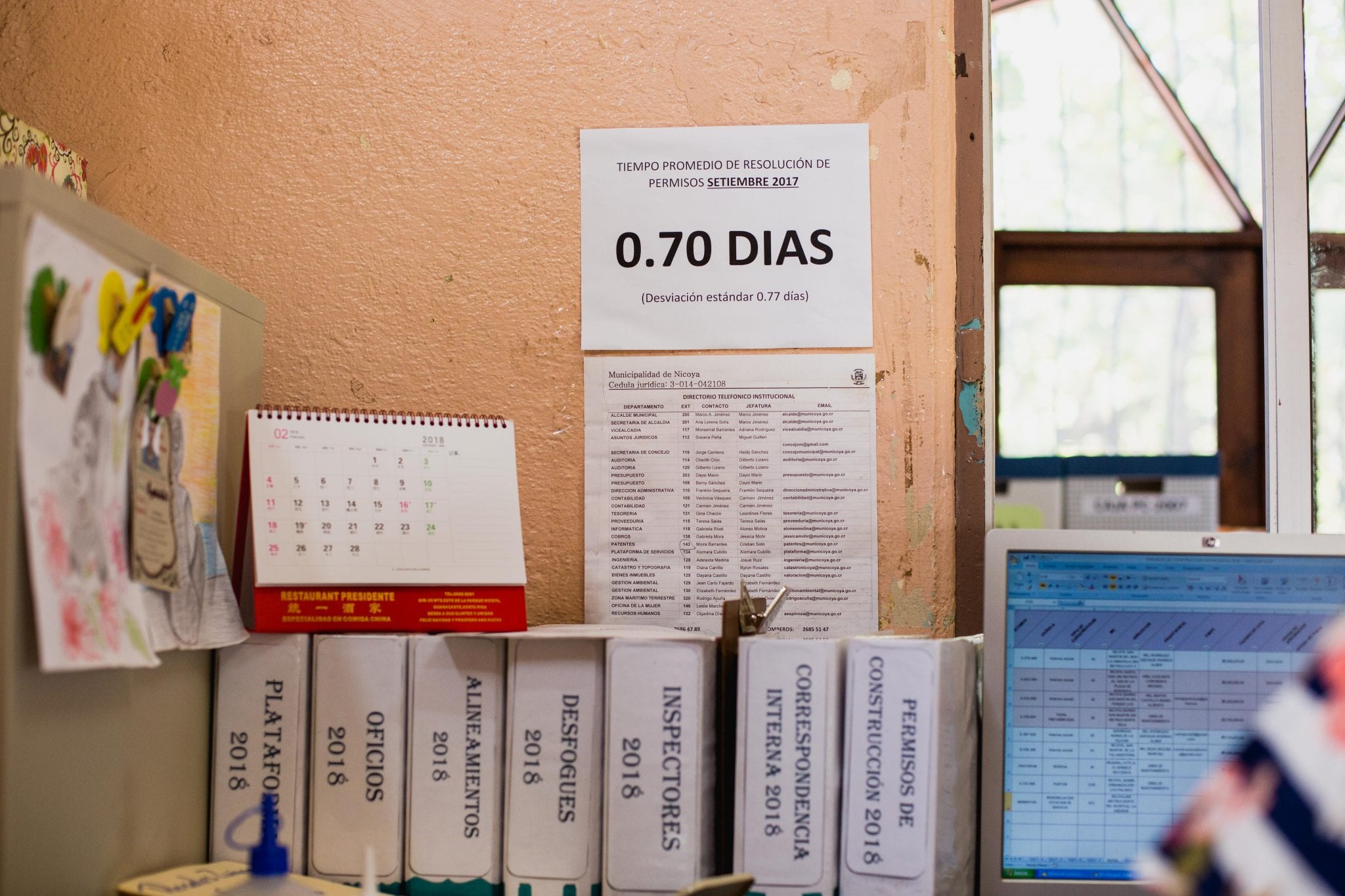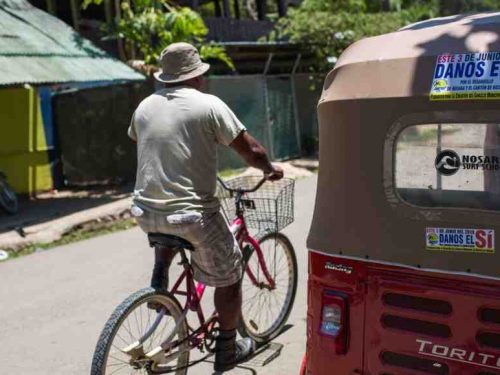
This year, Costa Rica’s professional association of architects and engineers (CFIA) created a ranking system to measure the efficiency of cities when it comes to granting construction permits. Nicoya took first place in Guanacaste and sixth nationally.
The city earned 63.3 points, 10 fewer than San Ramón, which earned the highest score.
This means that those who live in Nicoya and build or make improvements their properties don’t have to invest a lot of time in paperwork at different government institutions and applications are centralized in city hall and are done digitally.
They also have the guarantee that permits are going to be reviewed quickly and the city will reduce the use of paper and their ecological footprint.
In January 2017, when the engineering department started to evaluate its own efficiency, it took on average between 10 to 13 days to issue construction permits.
“We had requests that were pending for more than 45 days,” says Josué Ruiz, the engineer in charge of the department. That means a long wait for those who request permits.
They have been able to reduce the wait time and in December began issuing permits in 0.68 days, a 93% reduction.
Local governments in Guanacaste rarely stand out for efficiency. For example, no city in Guanacaste earned greater than 70 points in the comptroller’s city management index, which measures quality in city planning, citizen participation, environmental development, roadway management, and social services.
At the Voice of Guanacaste, we looked into what Nicoya is doing in order to achieve this acknowledgment and what other cities must do in order to find themselves in a similar position.
- A digital system
Nicoya, Carrillo, and Nandayure handle construction permits in a fully digital system. According to CFIA, only 30 of 90 local governments in the country – including municipal council districts – do this.
Another 49 combine digital systems with physical paperwork and 11 use exclusively paper. In Guanacaste, the other towns – with the exception of Santa Cruz, which still works with printed paper – use both methods.
According to CFIA, doing it digitally improves transparency, quality, security, and sustainability. The Nicoya engineering department reduced its paper use by 92 percent after implementing the digital construction project administration (APC) system in 2016.
If you wonder how your city can become 100 percent digital, the answer is pressuring them until they do it.
“We don’t have the authority to tell them to use APC. Users or customers are the ones who are going to make cities move to a digital platform,” says CFIA engineer Javier Chacón.
- Clear Work Roles
The Nicoya city engineering department is made up of three people, including one engineer, one secretary, and an inspector. Each one has a defined role so construction permits are processed quickly.
“We created a structure in which each person does a part of the process,” says Josué Ruiz.
Ruiz performs the first review in the APC and checks who has a payment pending. The secretary puts the information together daily regarding projects in a separate document and the inspector reviews the plans and permits at the site where the construction will be done and follows up on debts.
“It has been teamwork and coordination with other departments like the urban planning department which is in charge of land use analysis.
It hasn’t always been this way. Before, the engineering department was in charge of land use analysis and figured out the characteristics of the land that would be used for building, but after analyzing the procedures they realized that it would be best for the urban planning department to take charge of this.
According to Ruiz, when they find errors in performance, they rotate the tasks among themselves in order to find the best method. He also added that the department needs at least one more engineer or architect in order to improve performance.
- First Response, Always
The CFIA ranking evaluates the time for a first response to requests, total time of the application, percent of permits approved in first response, the complexity of the application and the number of requests.
According to the CFIA analysis, Nicoya is fast with its first response. “It has demonstrated that the review time is short for a large portion of projects and that are of relative dimension (large construction),” says Chacón from CFIA.
In the engineering department, the review the APC at the beginning and end of each day in order to give a quick response to applications.
“People aren’t going to get made because their project was rejected. What bothers them is the long response time and that it’s not clear why an application was rejected,” Ruiz said.
The CFIA engineer added that Nicoya City Hall has a point that it must improve because one of every two plans that enter require changes. “One possibility is to improve how we disclose requirements,” Chacon says.
- A Paper on the Wall
In 2017, the department started to evaluate their work. “In the first month we realized that there were permits that were pending for more than 30 days,” Ruiz said. “That’s where we said, if in 30 days we can’t issue a permit, the truth is that we aren’t doing much.”
They identified what steps were taking longest and sought ways to improve them.
Now, monthly, the department does a report on its performance and constantly analyzes what points diminished. Every month they put a piece of paper on the wall of the office that indicates the time it took to process an application.
“Our ideal goal is to have it under a day,” says secretary Angélica Villarroel. “Sometimes it goes up, but since we evaluate, we realize why,” Ruiz said.
The department also sends an evaluation form to the engineers and architects that process the applications for the city so they can evaluate the service and performance of the construction permit department. This allows them to make decisions about things that could be improved.







Comments